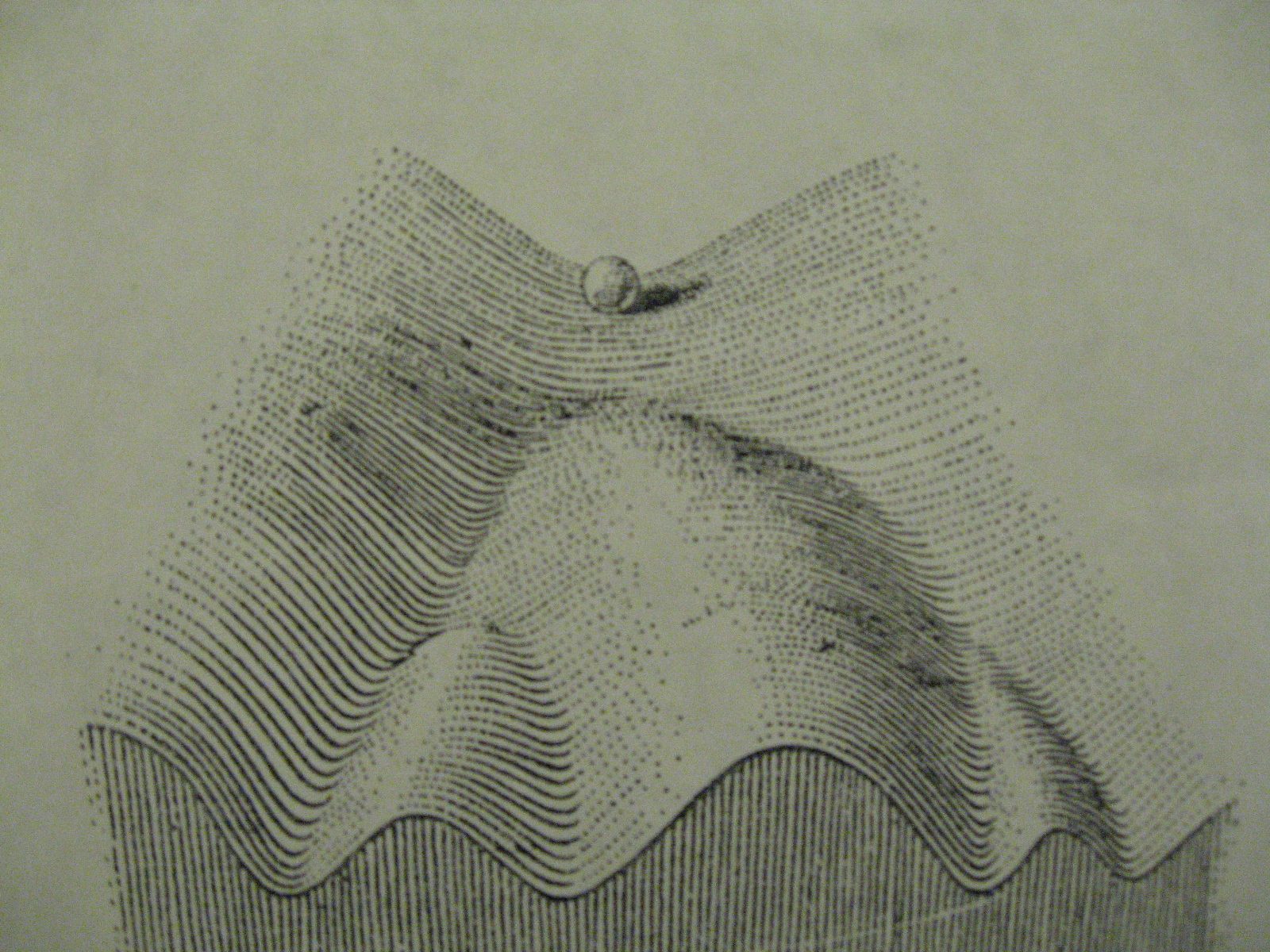 This is a print from our collection of photographic and illustrative material from Waddington’s publications. It illustrates the epigenetic landscape, the concept for which Waddington is perhaps best remembered. This image first appeared in Waddington’s book The Strategy of the Genes (Allen and Unwin, 1957) and visualises the developmental history of a cell in an embryo, represented here by a ball rolling down the ‘landscape’. As it rolls, the ball has several ‘choices’ as to which way to go – just as the developing embryo is influenced down certain ‘paths’ by various genetic and environmental factors – and by the time it reaches the bottom of the landscape, it will have made several such ‘choices’. Waddington called the pathways which are permitted ‘chreodes’ (described as ‘the path followed by a homing missile, which finds its way to a stationary target’). The underlying concept is that the entire ‘landscape’ of development is influenced by the actions and pathways of each individual gene, and also that development can even be disturbed (ie by the ball being pushed up a ridge) and yet still reach an normalised equilibrium (the bottom of the ‘valley’) before the adult state is reached.
This is a print from our collection of photographic and illustrative material from Waddington’s publications. It illustrates the epigenetic landscape, the concept for which Waddington is perhaps best remembered. This image first appeared in Waddington’s book The Strategy of the Genes (Allen and Unwin, 1957) and visualises the developmental history of a cell in an embryo, represented here by a ball rolling down the ‘landscape’. As it rolls, the ball has several ‘choices’ as to which way to go – just as the developing embryo is influenced down certain ‘paths’ by various genetic and environmental factors – and by the time it reaches the bottom of the landscape, it will have made several such ‘choices’. Waddington called the pathways which are permitted ‘chreodes’ (described as ‘the path followed by a homing missile, which finds its way to a stationary target’). The underlying concept is that the entire ‘landscape’ of development is influenced by the actions and pathways of each individual gene, and also that development can even be disturbed (ie by the ball being pushed up a ridge) and yet still reach an normalised equilibrium (the bottom of the ‘valley’) before the adult state is reached.
In The Strategy of the Genes, Waddington states that although the epigenetic landscape ‘only provides a rough and ready picture of the developing embryo, and cannot be interpreted rigorously, it has certain merits for those who, like myself, find it comforting to have some mental picture, however vague, for what they are trying to think about.’ Quite! Waddington’s epigenetic landscape is as influential a concept – and diagram – today as it ever was, and part of its effectiveness relies on Waddington’s ability to describe a complex idea using clear language and striking visuals.

Pingback: C.H Waddington: inspiring new creations |
Could I use the image above for a blog?
Hi Brigitte,
Edinburgh University Library are not the copyright holders for this image – this would lie with the publisher or the artist. The ‘Dolly’ blog operates a ‘take down’ policy on any images for which we do not hold copyright.
Kind regards
On abebooks there are currently only 2 copies of Strategy of the Genes 1st ed. in dust-jacket listed – one about £590 and the other over £600. Why is it so scarce? Is it because it introduces the epigenetic landscape concept and it therefore very sought after?
Hi Graham, Many of Waddington’s books have been out of print for some time, which tends to push the prices up. Thanks, Clare